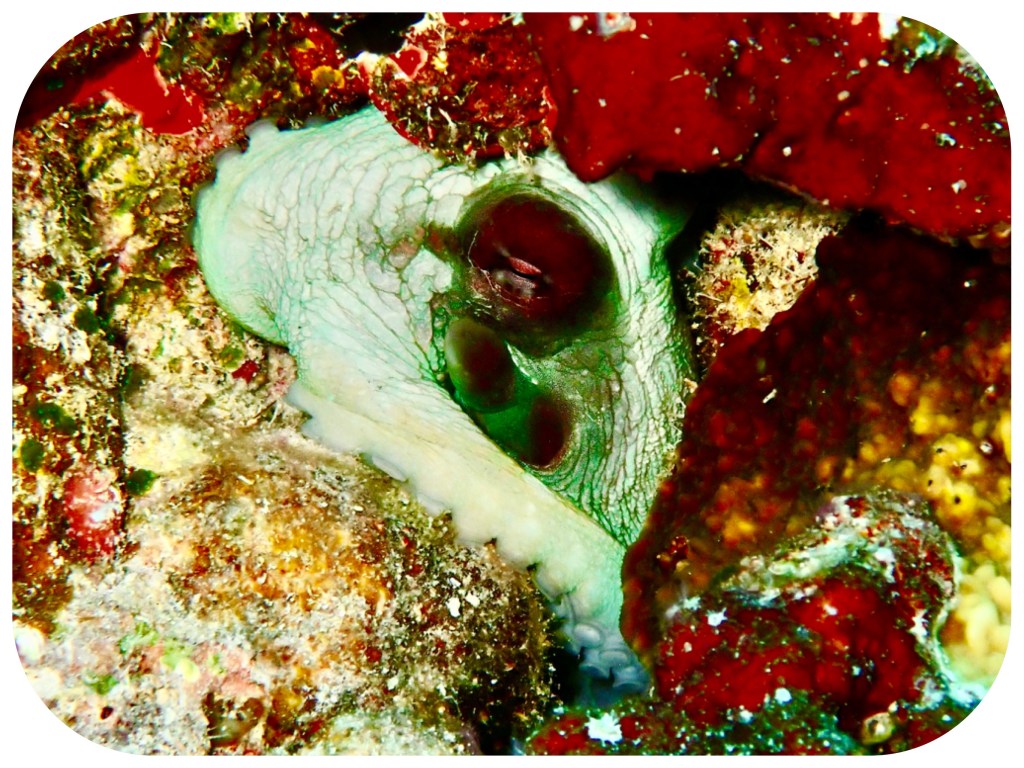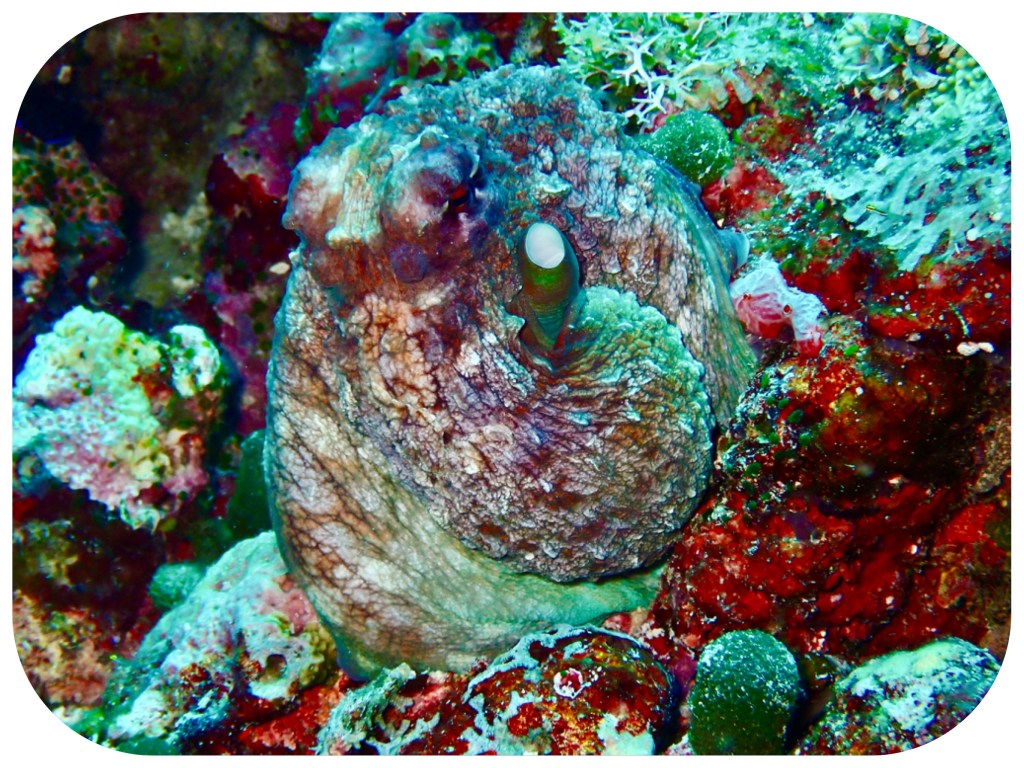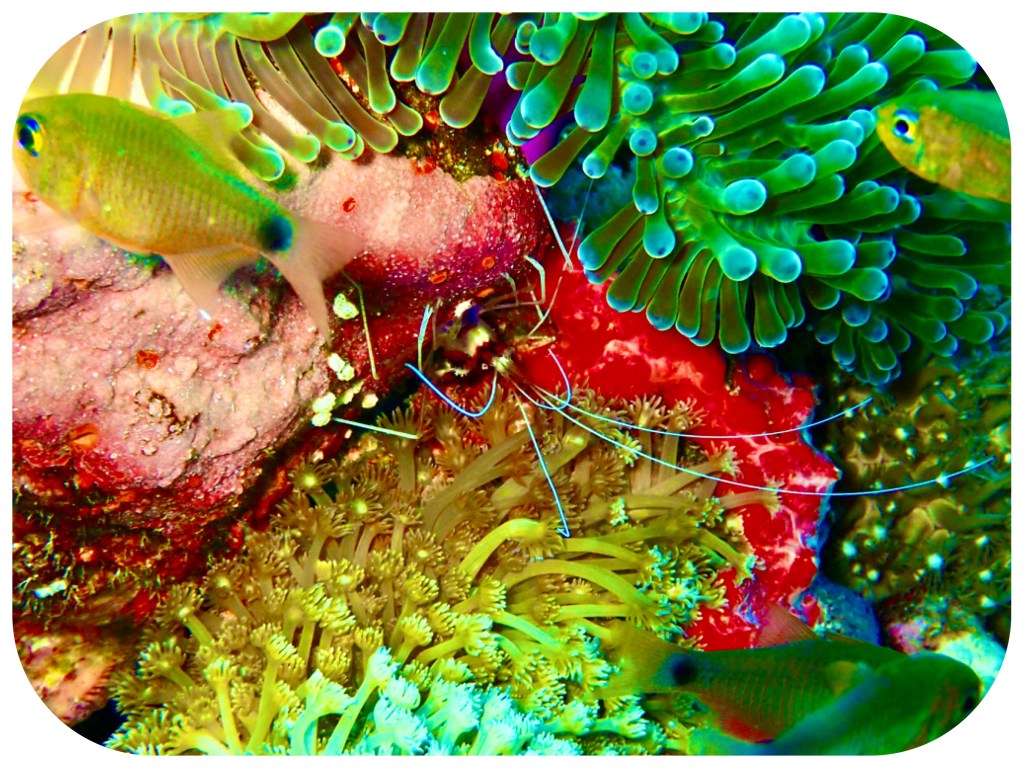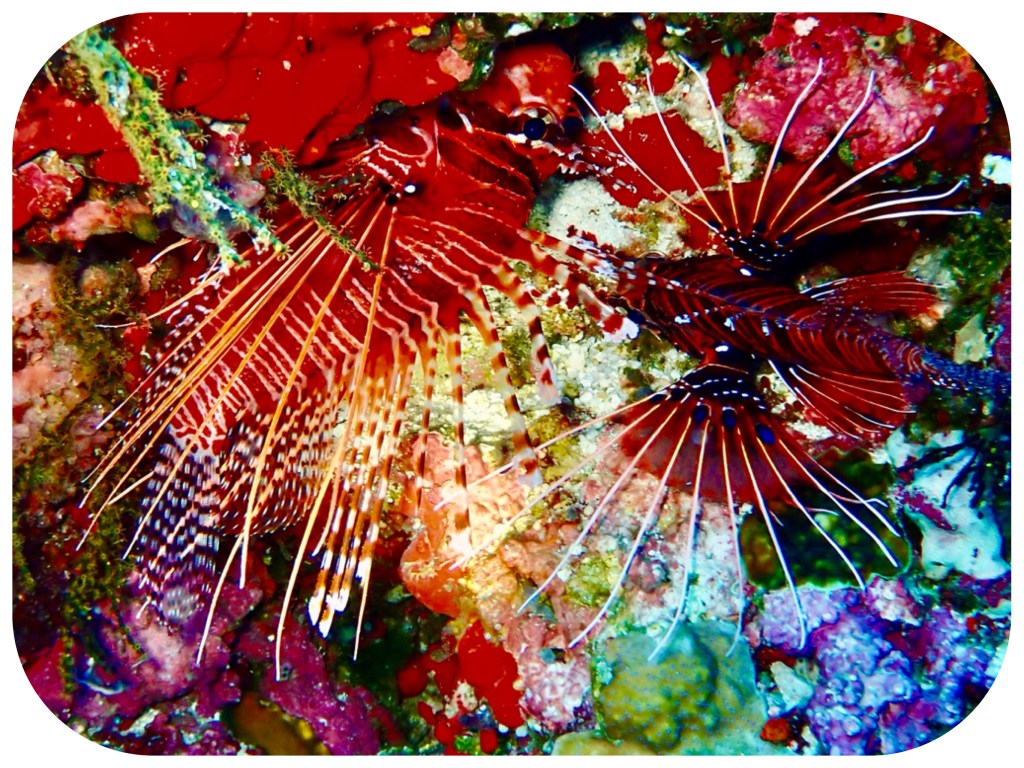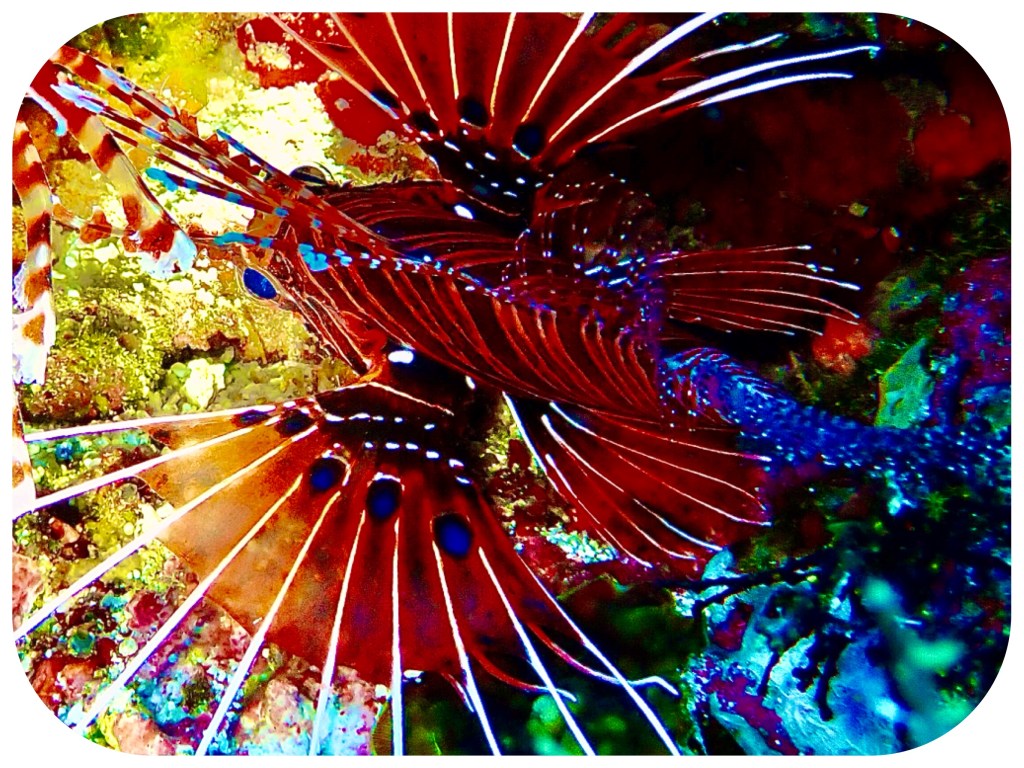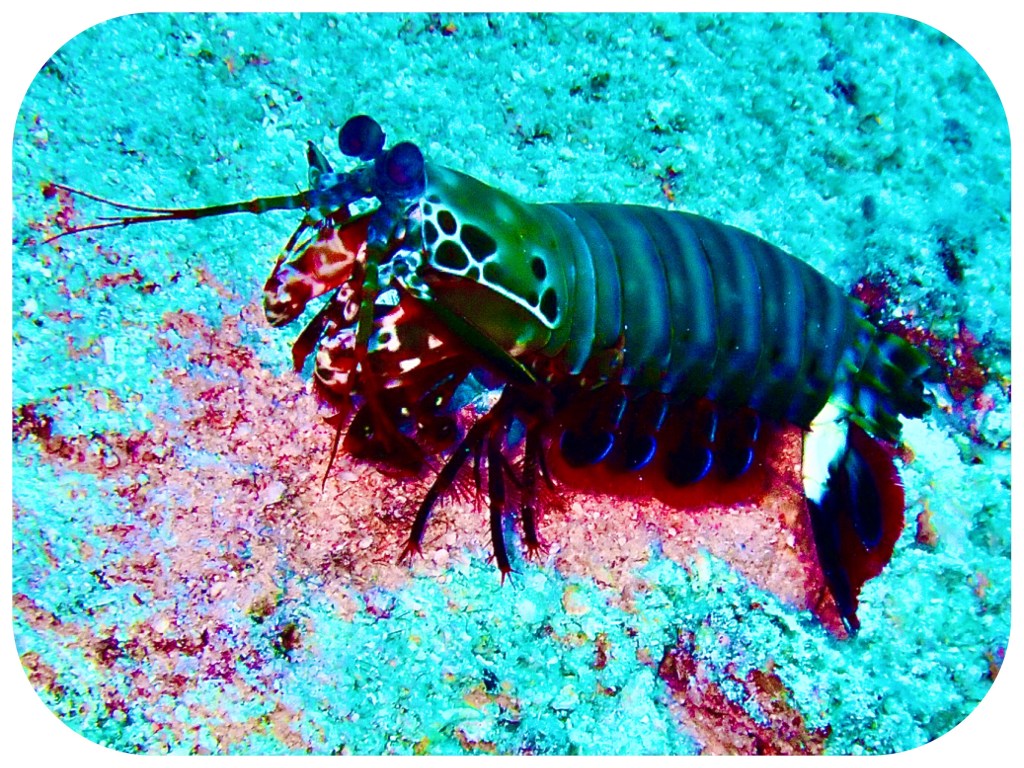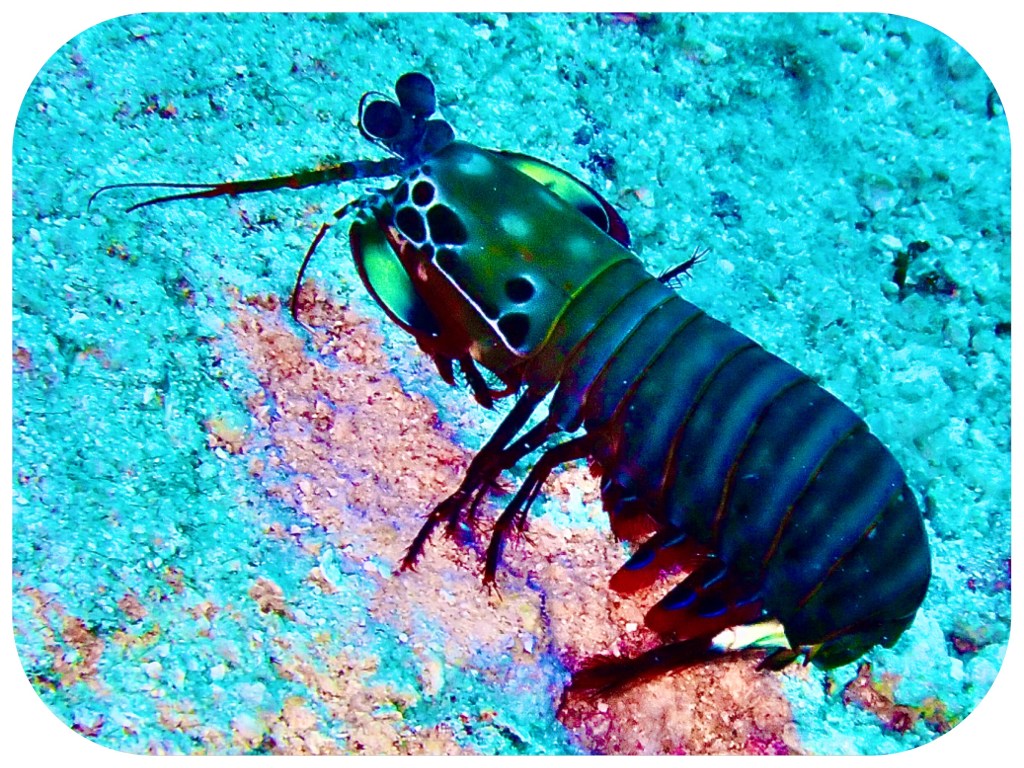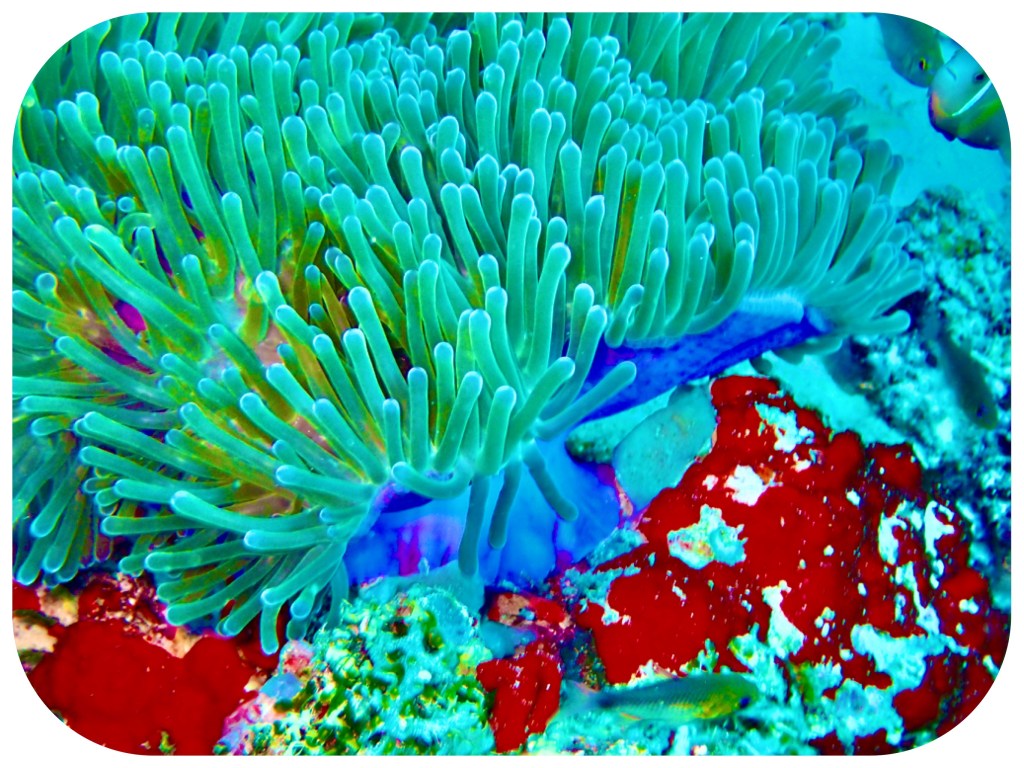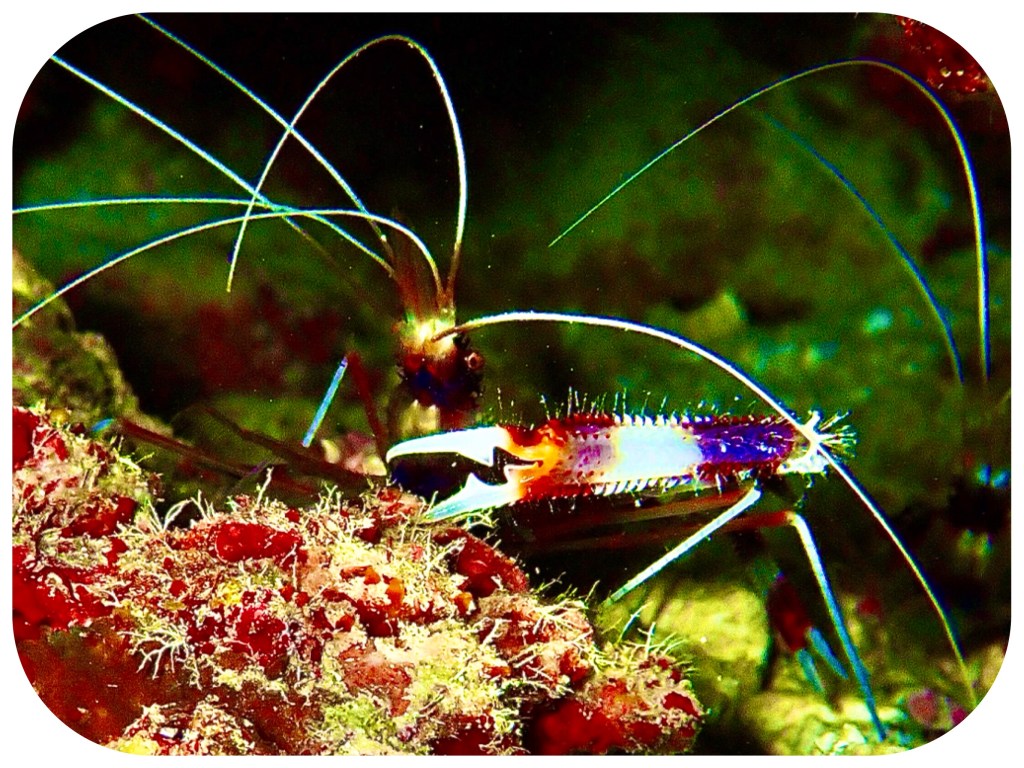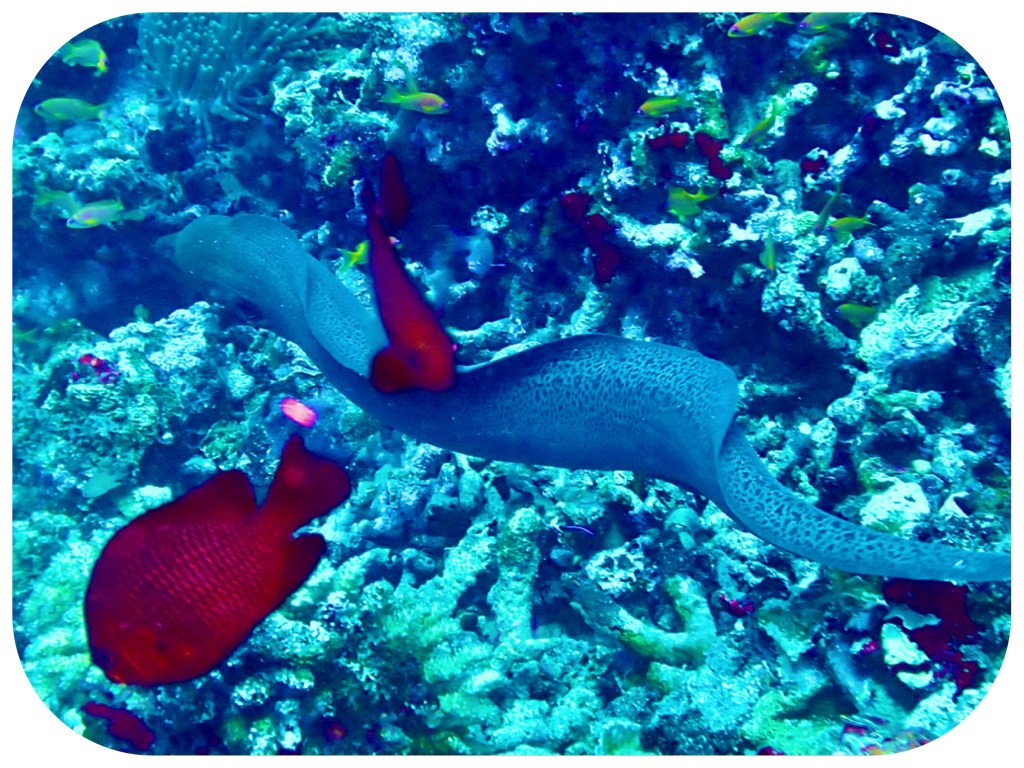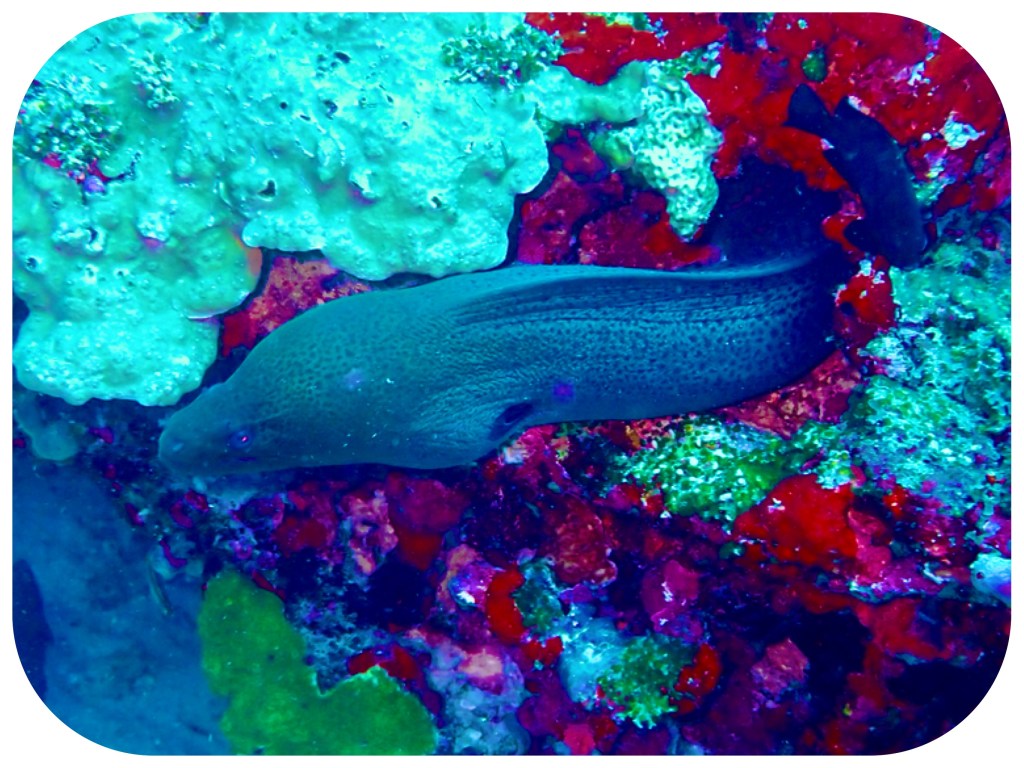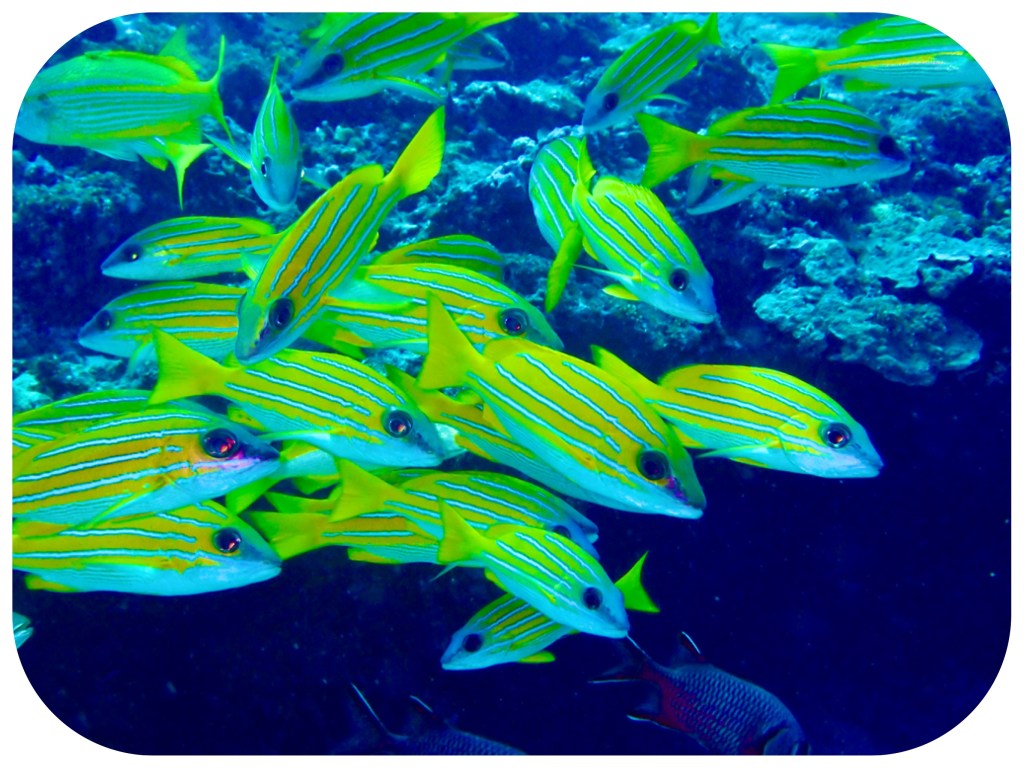Diving in the Maa-Giri Dive Sites, In The Lhaviyani Atoll, Maldives
Diving in the Maa-Giri Dive Sites, In The Lhaviyani Atoll, Maldives
When trying to photograph a closeup of the Mantis Shrimp, I was told to be aware of the Mantis’ strong fighting arm, which is said to be bone crushing.
When underwater, if a guide or another diver wants me to be aware of a mantis shrimp, they give me the signal for a shrimp, which is two index fingers (tentacles) coming out of the head, followed by another signal of both fists making boxing movements.
Divers have international signals for most sharks, creatures and fish, but there are often local signals for eels, schools of barracudas, schools of tuna, Napoleon fish, turtles, octopus, etc.
The reason that the signal for the mantis shrimp is boxing fists, is because the Mantis packs a mean punch, smashing its victims' shells with the force of a .22 caliber bullet.
This is not because the Mantis has particularly powerful muscles, but because of its big biceps.
It has arms that are naturally spring-loaded, allowing it to swing its fistlike clubs to a speed of up to 23 metres per second.
When you observe this relatively small creature playing around, it is hard to believe that it can smash human bones, but nature gives each creature a way to protect itself and to survive.
Sometimes, as I dive slowly with my camera flashing, I feel like an underwater paparazzi, disturbing the home life of quiet creatures as they go about their days.
But I do try to be respectful and not too disruptive.
I never touch the coral or any creature, and if I see a small octopus hiding and pleading with me not to reveal its location to the rest of the divers in my group, I respect its subliminal message to me, and go on without mentioning it to the rest of the group.
After all, there is so much to see in each dive site, even without noticing every single creature.
The underwater visibility has gotten a bit more murky since we came to the Maldives at the beginning of April.
It is now more milky, and I find it harder to spot or photograph sharks and rays in the blue ocean.
In the last few days, I have been diving with a group of lovely people from Germany.
They are experienced divers with a great sense of humor and such sweet demeanors.
They all love to photograph, which means we all go slow enough to notice, spot, see and take pictures.
My plan for the future is to dive twice per year, perhaps for a month each time.
My diving equipment is a bit heavy and old.
I plan to gift my BCD to a local diver on the island, and to upgrade my diving gear to lightweight travel gear, before my next diving trip.
The Maa-Giri Dive Site is divided into north and south, and most divers dive only one area per dive.
Maa-Giri South is a submerged reef which lies in the channel and is subjected to the currents flowing in and out of the atoll.
At the point where the current hits the giri there is an extraordinarily high concentration of fish life.
Big schools of blue-striped snappers, oriental sweet lips and schooling banner fish gather at the split point, while neon fusiliers swarm all around.
There is a large area covered in anemones, which are full of clown fish.
Along the south side of the dive site, there are overhangs in the wall where you can usually find sleeping stingrays and honeycomb moray eels.
You can also spot napoleons and tuna cruising in the blue.
The Maa-Giri North has an interesting wall and overhangs, where you can often find nurse sharks and stingrays sleeping in the small caves.
I got a good photo of a small gobi, running up and down the whip corals.
For the colorful coral lovers, tiny whip coral cowries can be seen, as can large schools of blue-striped snappers and banner fish congregating close to the eastern side of the Giri.
The top reef is full of parrot fish in every color imaginable, and you can see Moray eels and cleaner shrimp along the walls.
Sending you love and blessings,
Tali









